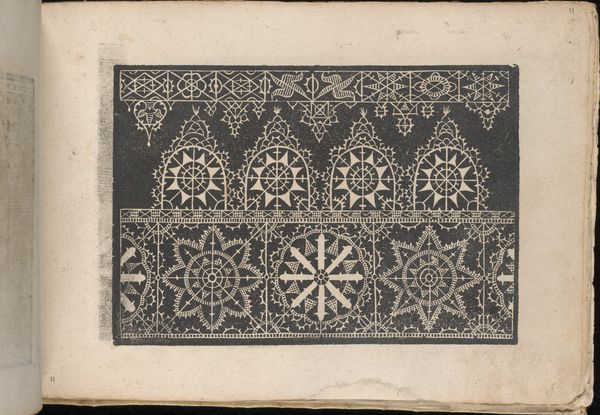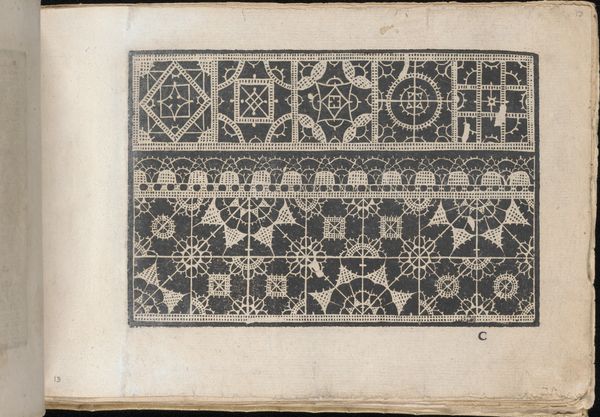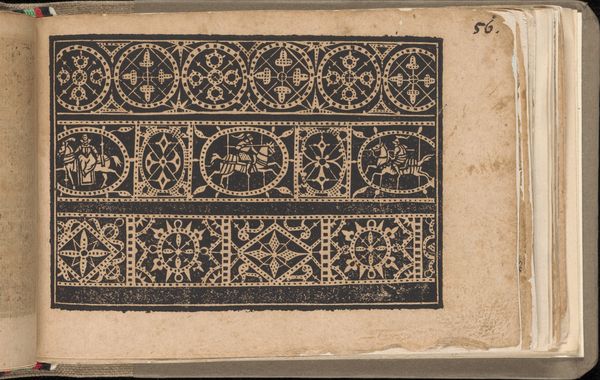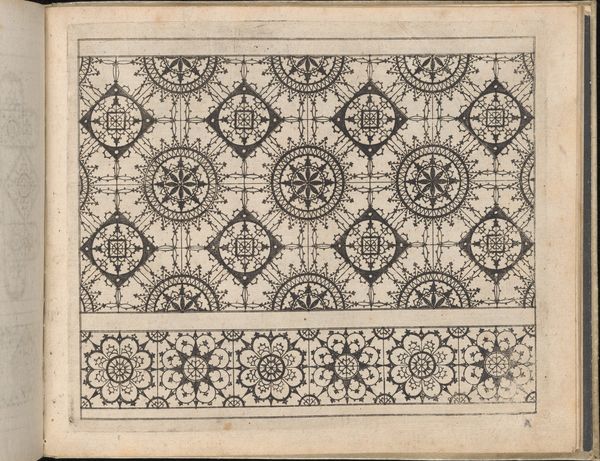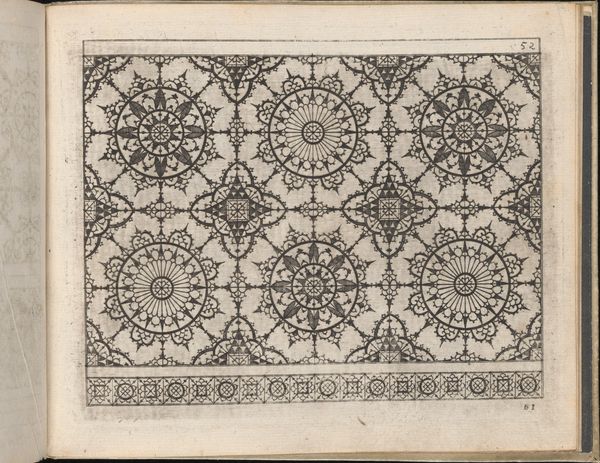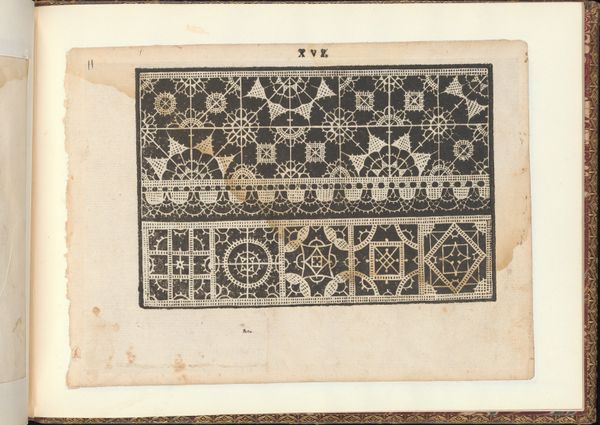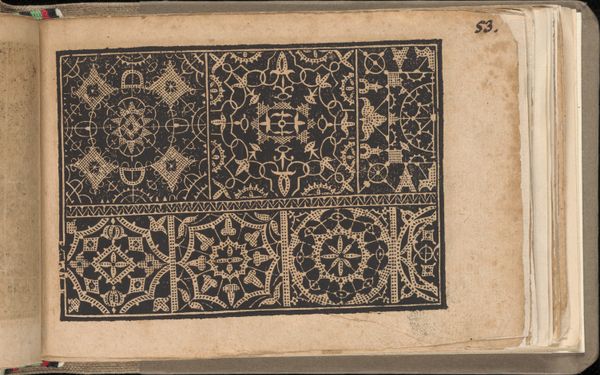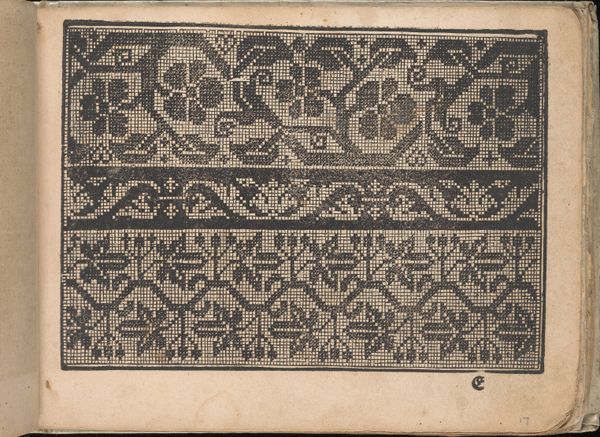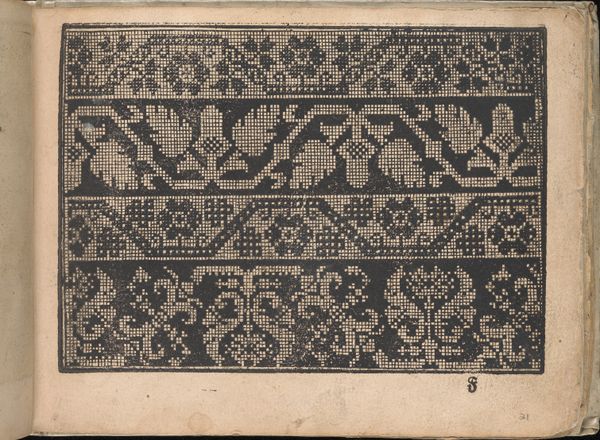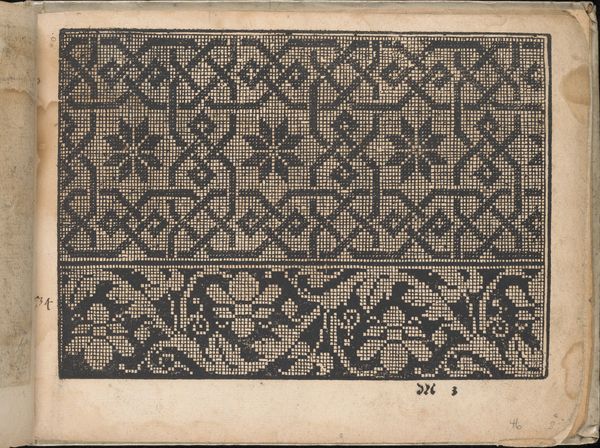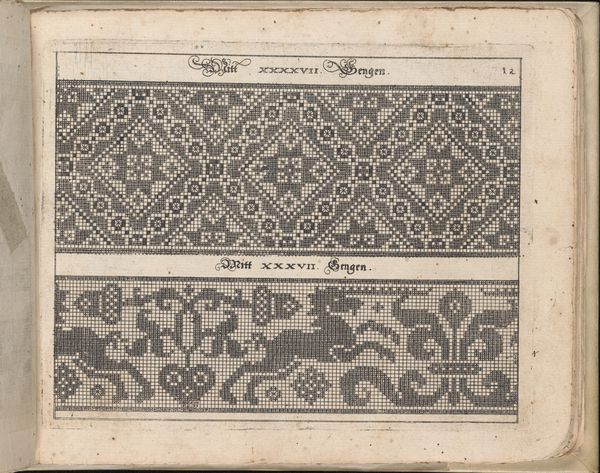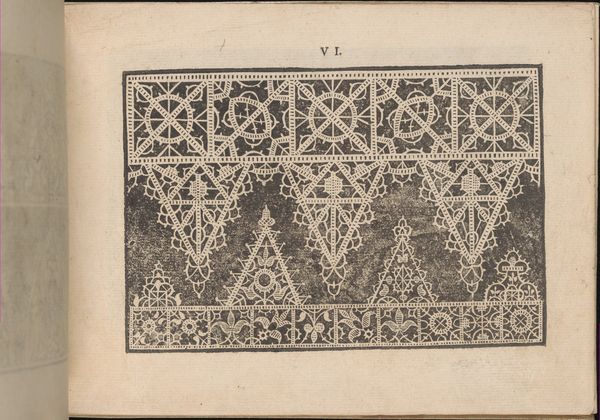
Fiori di Ricami Nuovamente Posti in Luce, page 14 (recto) 1591
0:00
0:00
drawing, ornament, print
#
drawing
#
ornament
# print
#
book
#
11_renaissance
#
geometric
Dimensions: Overall: 5 1/2 x 7 7/8 in. (14 x 20 cm)
Copyright: Public Domain
Editor: So, this is a page from "Fiori di Ricami Nuovamente Posti in Luce" by Matteo Florimi, from 1591. It's a print showing designs for embroidery. The stark geometric patterns are captivating. What can you tell me about the historical and cultural significance of something like this? Curator: It’s fascinating to consider this print not just as a visual object, but as a crucial document in the history of women's work and social status. Consider who was likely engaging with this imagery. Embroidery during the Renaissance was not merely decorative; it was often a signifier of status, a form of economic production controlled largely by women, and a critical skill passed down through generations. What does the dissemination of these printed designs imply about changes in access to knowledge and skill? Editor: It sounds like the printing press played a role. Previously this knowledge was more tightly controlled. Curator: Exactly. The mass production of pattern books like this one democratized access to design, but perhaps simultaneously altered the perceived value of handcraft. It highlights the tension between artistic expression and economic activity. Think about the labor involved, and how its value changes as designs become reproducible. Who benefits from that shift? Editor: That's a powerful point. Did the imagery itself carry social meaning? Were there political dimensions to these patterns? Curator: Absolutely. The geometric motifs could be seen as reflecting broader cultural preferences for order and symmetry, or even invoking status through displays of sophisticated pattern work. Considering the patron, these would have conveyed messages about their financial and political station. Furthermore, understanding the systems of patronage, we should ask ourselves which segments of the female population gained or were restricted from these visual means of cultural expression? Editor: It gives a whole new dimension to appreciate how arts and socio-economic elements interconnect! Curator: Indeed. Looking at art through this lens reveals so much about the world it was created in, and the power dynamics it reflected and perpetuated.
Comments
No comments
Be the first to comment and join the conversation on the ultimate creative platform.
